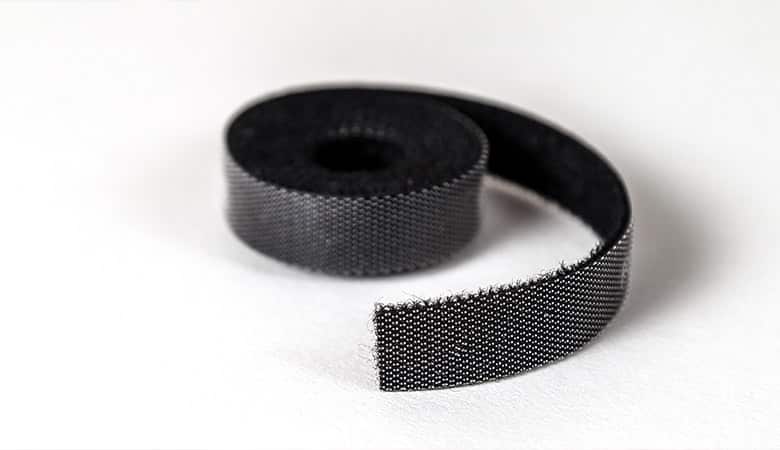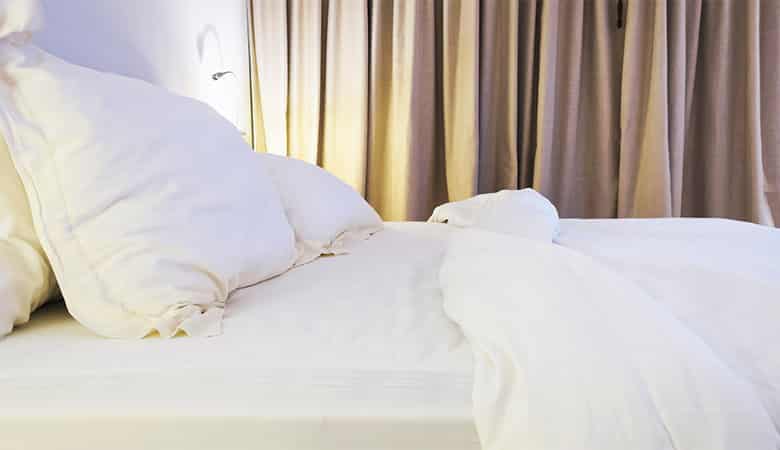A mattress pad is a thin layer of material that adds comfort to your bed and protects your mattress from wear and tear. Mattress pads are made from different materials such as cotton, wool, latex, and foam.
They are usually padded but are not very thick; hence some are washable with a washing machine. As much as this sleeping accessory can be functional, it can give you quite a headache if you buy one that bunches up or forms ridges and bumps while you sleep. So how can you fix this?
1. Pad Straps
Elastic pad straps are a great way to keep your mattress straight and in place throughout the night. These straps cling underneath your mattress and on every corner of the mattress pad, making it secure and flat.
Because the straps are elastic, you can stretch the mattress pad out to your liking. Aside from pad straps, you can also use bedsheet straps. They work the same way as the pad straps; only you use them to secure the bed sheet covering both the pad and the mattress. It’s a bit like killing two birds with one stone because once the bed sheet is secure, so is the mattress pad.
2. Velcro Tape

Velcro tape is a material that has tiny hooks on one side and even smaller loops on the other. For example, a lot of kids’ shoes have Velcro tape instead of shoelaces.
When you join one side to the other, they stick together. Place the sticky side of both sides of the Velcro tape on your mattress or box spring and the mattress pad and then stick them together.
Ensure that you align all corners of the mattress pad properly to your mattress for the best results. If Velcro tape is outside your budget, you can also duct tape or double-sided carpet tape.
3. Pin it
For this method to work efficiently, you need corkscrew or tac style pins. You can buy as many pins as you need to ensure that the mattress pad does not move when you sleep. You place a pin on every corner of the mattress pad and attach it to the box spring or your mattress. If you have a bunch of safety pins lying around, you can use them too.
If you are wondering whether using pins is safe, the answer is yes. Use enough safety pin on the corners and the side of the mattress to distribute the pressure equally. This will also prevent the pins from shredding or ruining your mattress.
4. Tightly Fitted Sheets

You can buy a sheet that has elastic corners that go underneath every corner of your mattress. Ensure the bed sheet is deep enough to cover both the mattress pad and the mattress.
A tightly fitted sheet can create some much-needed friction that will prevent the mattress pad from bunching up when you roll over in your bed.
Another option is to get a fitted mattress pad. A fitted mattress pad is similar to a fitted sheet but with extra padding at the top. With a fitted mattress pad, you don’t have to worry about it being deep enough to cover the whole mattress because they can cover up to 24 inches deep.
Fitted sheets are more of a temporary solution, but a fitted mattress pad is guaranteed to fit on your bed.
5. Try a Non-skid Mat
When all else fails, it’s time to get creative. Non-skid mats are mainly used in between a carpet and an area rug. However, that is not to say that you cannot use it between your mattress and mattress pad. Remember, some mattress pads are made from latex, and a non-skid mat might be the solution to a bunching mattress pad made from latex or foam.
The main idea of using a non-skid mat is to create friction to prevent any movement of the mattress pad.
Why do Mattress Pads Bunch up?
All you want is a good night’s sleep. You have tried to fix the problem, but your mattress pad still pulls in like an hourglass when you sleep. Sometimes it’s the bed. Other times it’s the mattress, or you made a wrong purchase choice. To get to the root of the problem, here are some reasons why your mattress pad is bunching up.
1. Soft mattress cover
Both synthetic and natural fabrics can have a smooth finish. A mattress cover or bed sheet with a soft finish usually has little to no grip. This means that your mattress pad is met with no friction to make it stay in place, which makes it move and form ridges in the middle.
2. Wrong size
Like beds, mattress pads come in different sizes. When you go shopping for one, ensure that it matches the size of your current bed. Avoid using or buying a small mattress pad on a big bed and vice versa if you change the bed, change the mattress pad too, and so on.
3. Bed condition
You can buy a mattress pad for any bed. Your only job is to ensure that the bed has a stable base. If your mattress does not stay put on the bed for starters, there is no way the mattress pad will do the same. Usually, the problem is with the bed itself.
If you have a bed with a lightweight frame, then chances are adding the mattress pad’s extra weight might destabilize it. If you already know that your bed has a stability issue, it is best to get that fixed. Also, consider getting yourself a bed that has a headboard and a footboard. Once you place a mattress pad on a bed with both a headboard and a footboard, it is likely to stay in place.
Getting enough sleep is essential to your general health. That said, before you buy a mattress pad, ensure that it comes with a fastening method. If it doesn’t, this article has armed you with enough information to know the way forward.
